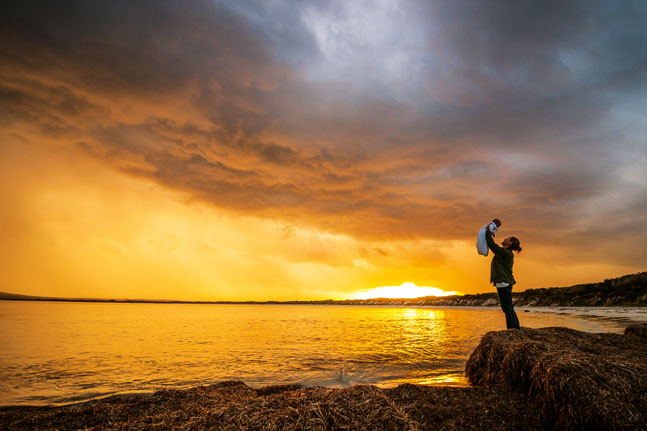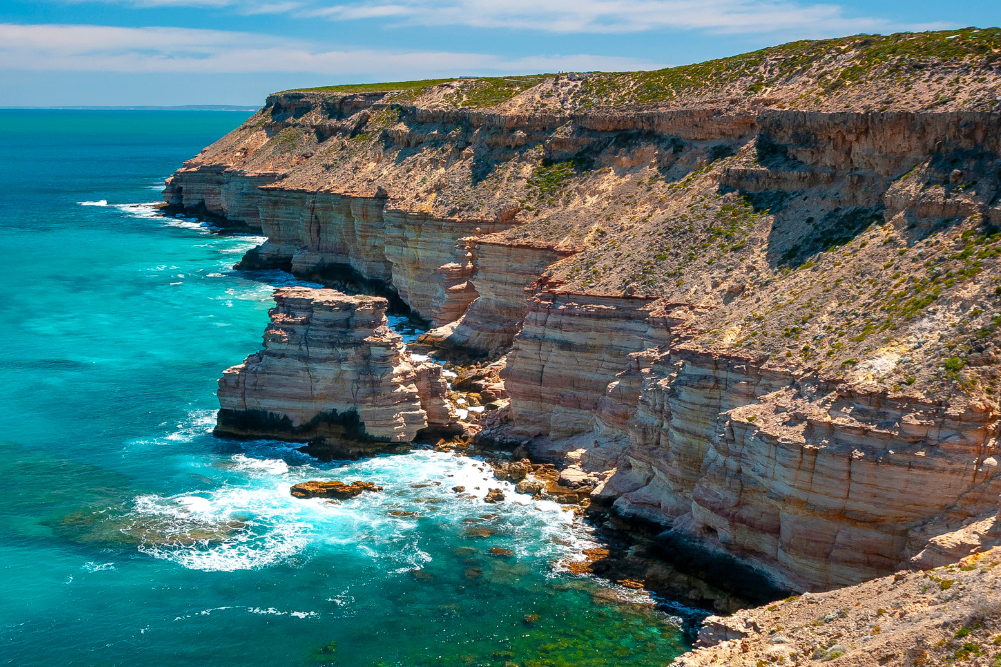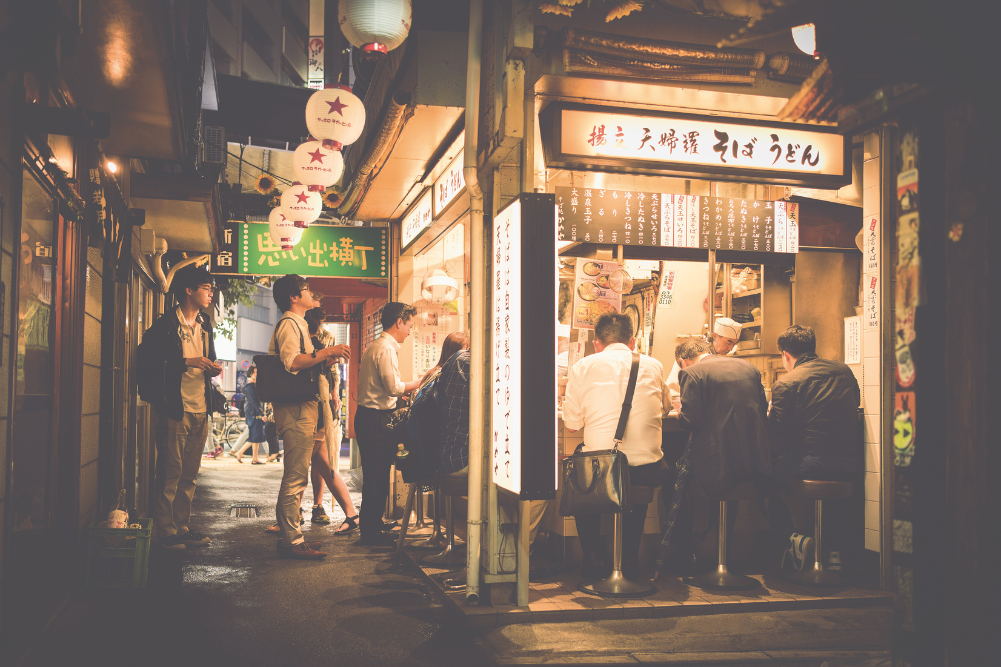10 ways to re-wild in the south-west of Australia
There’s a local tradition that Cape-to-Cape hikers stick to, touching the cool stone of the Cape Naturaliste lighthouse before shouldering their packs and setting off south for Cape Leeuwin, 140km away on WA’s wild southwest coast.
Through flowering pink Pimeleas I walk that trail too, brushing past peppermint trees and following their heady scent up crumbling Tamala Limestone cliffs to peer into the turbulent Indian Ocean far below. I scoop freshwater from timeless coastal springs, pitch my tent on lonely, windswept ridgelines and end three blissful days of wild walking at Cowaramup by cooling my heels in a cerulean sea.
This precious time in southwest Western Australia is my chance to re-wild: to reconnect with nature and myself. To reclaim a sense of solace beneath towering karri forests, on silent, tannin-hued rivers and under the waves that crash onto Margaret River’s most secluded, tri-coloured beaches.
I wasn’t born into this cherished part of Australia but we have a history, this wilderness and I. Paddling its big rivers, standing atop lofty monadnocks and on countless, drizzly-day forest wanders, I find myself moving in peaceful meditation, calm and oh-so-happy.
To reclaim a sense of solace beneath towering karri forests, on silent, tannin-hued rivers and under the waves that crash onto Margaret River’s most secluded, tricoloured beaches.
Australia’s southwest corner is quite unlike anywhere else in the country. It’s much too wild to allow its cool surf culture and winery scene to ebb into pretentiousness. When I need to re-wild, this is the place. I load up the car, strap down the canoe, lace up my boots and set my compass southwest. A hundred forest adventures await, guaranteed to quieten minds and re-wild souls; I link up as many favourites as I can squeeze into two weeks and get moving.
Forest art
The very idea of “true” wilderness excites me: patches on the planet utterly unaffected by technological intervention, where no human has left a mark. In WA’s southwest, true wilderness exists nestled within the Walpole Wilderness Area (WWA) where half the region’s most precious karri and tingle forests thrive. These forests were saved by a great green battle fought at Swarbrick that brought down a government. In 2004, loggers were finally forced out.
Today, the birthplace of the WWA is home to a captivating outdoor gallery where canopy art hangs from some of Australia’s oldest and tallest trees. I drive 10 minutes out of Walpole to stand beneath the Golden Torus, a glinting reminder of the interconnectedness of all living things. Up the track, I sit cross-legged in front of the Wilderness Wall of Perception, pondering a 40-year-old quote from WA’s Conservation Council that pretty much sums up why I’m here:
“Wilderness areas have become sanctuaries where solitude and silence can ease the strains of urban living and encourage contemplation — places where serenity and equilibrium can be regained.”
Today, we’d call that re-wilding.
Walpole’s wild lands
Beyond Swarbrick I climb into the clouds, romping past wildflowers and beneath towering ferns for summit views atop the giant, granite monadnock known as Mount Lindesay. It’s said that you need a month to fully navigate the Walpole Wilderness Area but, in just a few hours, you can see it stretched out before you from the summit of Mount Lindesay.
I take in vast coastal views over this fragile collective of national parks and reserves, only reluctantly returning to sea level in search of rare, red tingles. A short drive away I find myself on a tourist trail, wandering through the fire-hollowed base of the Giant Tingle Tree — the world’s largest-girthed, thriving eucalypt — and climbing into the canopy at the Valley of the Giants.
Treading a boardwalk held 40 metres above a forest floor too fragile for footsteps, I ogle red tingle trees that tower another 30 metres above: trees so rare they exist only in a 15km radius of Walpole and nowhere else in the world. The bird’s-eye perspective is enthralling but the crowds separate me from the solitude I’m seeking; I can’t see the forest for the trees.
Tall trees
I flee northwest towards Manjimup, negotiating muddy logging tracks to pitch my tent deep in a lonelier forest at Greens Island on the Donnelly River. Here, karri trees shed their bark in bright, autumn time ribbons; orange, pink and grey-white streamers dance overhead in the breeze.
I wriggle out of my sleeping bag at dawn to brew tea and sip it without the usual off-to-work haste. The drizzly day stretches ahead of me: a blissful day of sodden boots and wet jumpers, one fantastically, freezing dip in Glenoran Pool and a walk that ends beneath the Four Aces.
This stunning quartet of 300-year-old giants has a history that nobody knows. I lean into them, arms thrown wide, eyes closed, smile broadening with each deep breath. It’s therapy like you’d never find on a couch and I soak it all up.
The trees have me hooked so I decide to go and climb one. Karri trees throw out few branches, making it rather difficult to get a leg-up, so I head to nearby Pemberton and its famous fire lookout tree.
Canopy climbing
Pegged in 1947, the Gloucester Tree is where the brave-of-heart go to test their mettle. I take a few terrifying steps above the handful of onlookers standing sentry at its base and don’t look back. It’s a nervous, sweaty climb up 153 steel rungs to the top. Halfway, the anxious English backpacker behind me turns around. “Only in Australia would they let you do something this dangerous,” were his parting words.
There are no safety nets on this thrilling endeavour and that’s just the point because to re-wild is to abandon your backup plan and dig a little deeper. I climb to the beat of a pounding heart, pushing fear away with focused intent and refusing to look up or down until, finally, there is nowhere left to go.
I heave myself onto a canopy platform at the top that sways wildly in the wind and savour the adrenalin-spiked moment. It’s a precarious place to be, perched high in the treetops without wings. I look down and, with sweaty palms, realise I’m only halfway through this crazy little adventure.
There are two other fire lookout trees to climb — Manjimup’s Diamond Tree (51m) and the Dave Evans Bicentennial Tree (72m) — but I’m eager to get grounded and shake off my solitude.
Just floating
The southwest’s most desirous beaches are more than a little tricky to reach, blocked as they are by giant sand dunes 20km thick. Hardy off-road travellers find a way, navigating rugged tracks through a remote coastal wilderness that should be more celebrated but, thankfully, isn’t. From Augusta west to Walpole, D’Entrecasteaux National Park protects 130km of largely inaccessible coastline and, inland, freshwater lakes and great granite knolls called monadnocks.
The bird’s-eye perspective is enthralling but the crowds separate me from the solitude I’m seeking; I can’t see the forest for the trees.
I reunite with my family for an off-road jaunt to Lake Jasper: a tiny pool known as Yoondaddup girthed by white sand beaches and colourful coastal heath. It might be the largest freshwater lake in the state’s southwest, but this “white water lake”, named because its crystal-clear water is unstained by tannins, is easily explored.
Our trio pushes off from Eastern Beach at dawn, stroking silent blades past white-faced herons and spotless crakes, ticking off species that breed on Lake Jasper in higher densities than anywhere else on the coast. Biologists rate this as one of the west’s top five wetlands, so it comes as no surprise to learn that its indigenous connection runs deep, too.
What scientists discovered when a severe drought in the 1980s caused Lake Jasper’s water level to drop was tree stumps, grass tree butts and dozens of flaked stone artefacts. A subsequent underwater archaeological survey deduced that ancient indigenous campsites and quarries once occupied the area until a mobile sand dune blocked the flow of a river to the sea 4000 years ago. This is how Lake Jasper was formed.
Our paddling fun ends with everyone getting wet, floating in the clear, chilly water and warming up afterwards on a hot sand beach. Nobody can bear to leave the scene, so we cook our dinner by the lake and devour it in solitude while watching restless birds settle as the sun dips low. In the tiny, quiet campsite above the lake, the moonlight evening is spent deciding where we should float our boat next.
Beyond Lake Jasper, a sandy 4WD track makes a break for the beach, a short 30-minute drive away. Across the soft sand dunes, we spend the night in a deserted beachfront nook and beachcomb across windswept dunes, following dozens of tiny animal tracks into eroded limestone caves.
The coastline south leads to the Donnelly River mouth and the magically dubbed Goblin Swamp. The name alone is enough to turn our compass.
Goblin Swamp
This unworldly landscape captivates all our imaginations: gnarled, mossy trees that stud the paperbark swamp, veiled by a swirling, early-morning mist. We tread the elevated boardwalk for an hour and, when we emerge, unload the canoe for a long, dreamy day on the Donnelly River, paddling towards the sea feeling strong and utterly free.
The very idea of “true” wilderness excites me: patches on the planet utterly unaffected by technological intervention, where no human has left a mark.
When it’s campfire time back at Snottygobble Loop, we fill a pot with fresh organic vegies bought from a roadside stall in Northcliffe and cook them over the fire. Marshmallows dangle on long, green sticks and there’s good southwest red to ward off the night’s chill. We watch the fire for hours, listening for the owls that hoot from the marri trees, until our child nods off to sleep.
The moon rises overhead, memories are made and, in this sanctuary where solitude and silence really do quieten our minds, the wild connection in all of us becomes just that little bit stronger.
Escape routes
Getting there
Margaret River is located 290km south of Perth (a three-to-four-hour drive). Other adventure hubs include Pemberton (for D’Entrecasteaux National Park) and Walpole and Denmark for the Walpole Wilderness Area.
When to go
Arrive in autumn for cool, dry weather and springtime for wildflowers. Expect hot, sunny days over summer.
Where to stay
Denmark’s Skyhouse Retreat (from $190/night, beautifulaccommodation.com) offers yoga classes on site.
Close to Margaret River, the rammed-earth solar-passive chalets at Forest Rise (prices start at $259/night, forestrise.com.au).
Rustic, solar-run Kambarang Eco Cabin near Donnybrook offers mountain bikers and hikers a slice of the simple life (from $125/night, cycletrek.com.au).
Favourite campsites
Greens Island (25km from Manjimup), Lake Jasper (D’Entrecasteaux National Park, $13 park entry), Snottygobble Loop (Greater Hawke National Park) and Boranup Campground (Leeuwin-Naturaliste National Park). Camping costs $8/adult/night and $3/child.
More information
Plan your trip at westernaustralia.com and book national park campsites at parks.dpaw.wa.gov.au.
10 ways to re-wild
- Paddle the Blackwood River, the longest continually flowing river in the state.
- Climb the highest treetop lookout in the world, the Dave Evans Bicentennial Tree.
- Snorkel Canal Rocks.
- Explore stromatolites and thrombolites on Lake Preston, Yalgorup National Park.
- Walk through the world’s only naturally occurring tuart forest.
- Dive the Busselton Jetty, one of Australia’s best dive sites.
- Surf North and South Points at Gracetown’s Cowaramup Bay (two of the top 75 breaks on the coast).
- Mountain bike the 20km Timberline Trail in St John Brook Conservation Park.
- Hike the 140km Cape-to-Cape Track.
- Go caving in Giants Cave.








